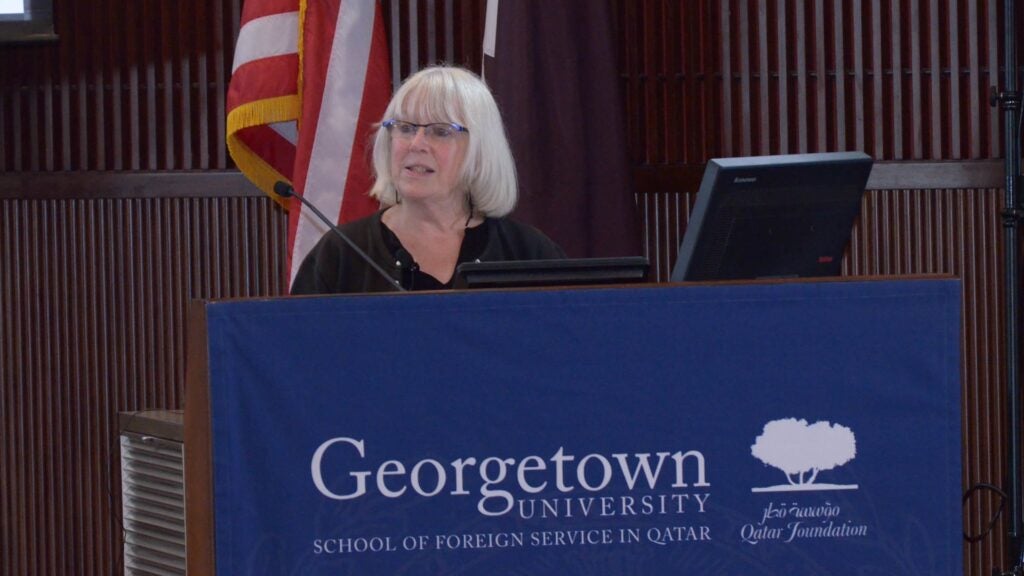Identity and Museums in the Gulf: Writing History Through Artifact

Georgetown University in Qatar (GU-Q) and University College London Qatar (UCL) recently co-hosted Dr. Anie Montigny, Assistant Professor of Anthropology at the French National Museum of Natural History, in a distinguished lecture titled “Museums in the Gulf; What is their Identity?” at the GU-Q campus in Education City.
Dr. Montigny’s interest in the Gulf began in 1976 when a search for a PhD focus brought her to work with a French team of social scientists invited by the Qatari Minister of Information, following the launch of the first Qatari National Museum. “I was fascinated by the desert. And the Qatari people welcomed me completely. My interest in the region has continued ever since.” This interest has covered both anthropological research into the customs and history of traditional Qatari bedouins as well as work in understanding the formation of identity in a region that has seen tremendous changes in a relatively short period of time.
She shared this extensive knowledge of both the anthropological study of the region and the challenges national museums face in recording that history. Her goal in the presentation, she said, was to get people thinking. “Identity is a very flexible idea. It can be formed through language, religion, kinship ties, and geography. So I want to pose the question-how is a national identity defined through national museums in the Gulf?”
Dean Gerd Nonneman of Georgetown University in Qatar touched on this notion of place and identity, by explaining: there is “a central challenge for academics is to explain the frameworks through which we see our world: such work will play an important role in our understanding of how multiple layers of identity are formed, and how they impact on the world we inhabit.” Museums, he adds, “are both a key reflection of this and a means of shaping identities”.
She describes the Gulf region as marked by historically dynamic multicultural exchange with shared traditions that did not follow strict state boundaries. “When national museums seek iconic artifacts that only represent a single country, it can be a challenge.” The challenge, she expounded, is best addressed by broadening the scope of national museum collections and their ethnographic narrative to reflect the historical reality of cross-regional influences.
Speaking as a museologist, she focused on opportunities to expand outdated approaches to artifact presentations in regional museums, such as the use of explanatory terms that are oversimplifications that don’t reveal the wealth of knowledge a deeper understanding of tribal life conveys. Context, she argues, is a vital, and often overlooked focus in Gulf state museums. “Presenting a display of traditional jewelry as simply ‘traditional jewelry’ without deeper anthropological connections that reflect status of the owner or social meaning of the design, for example, will limit the historical impact of the object, keeping it within the sphere of the sentimental.” This, she argues, is a place where future regional national museums can pay special focus.
The economic bloom of the Arabian desert has resulted in unprecedented immigration to the region, resulting in a uniquely multicultural landscape. It is within this landscape that Gulf states are pursuing new museum initiatives that reflect their unique history, culture, and identity. These national museums, Dr. Montigny argues, are not only collecting the artifacts that reflect that identity, but are contributing to the very definitions they seek to encapsulate. “The notion of heritage is complicated, and paradoxical.” said Dr. Montigny, and instead of building new museums with “old concepts”, she encourages a more open and diverse approach to how museum spaces are designed, to reflect the history of an interconnected world.